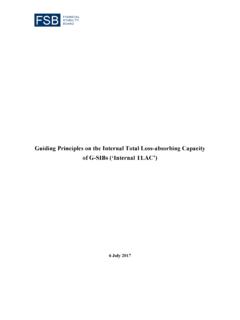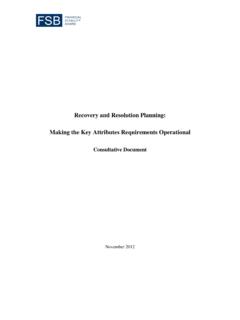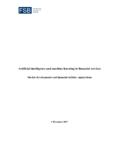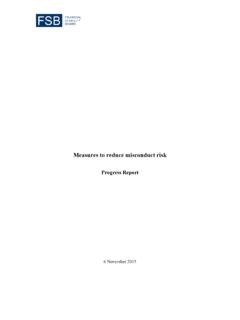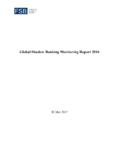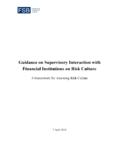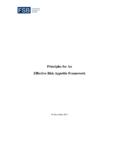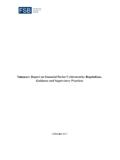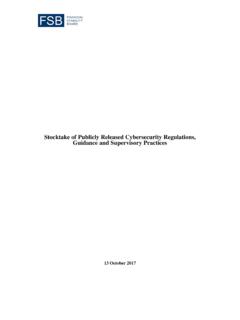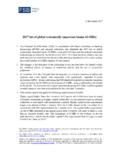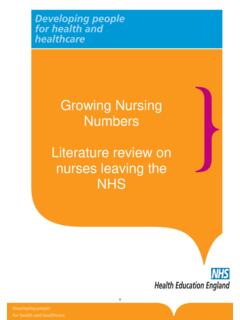Transcription of 2020 list of global systemically important banks (G-SIBs)
1 2020 list of global systemically important banks (G-SIBs) 1. The Financial Stability Board (FSB), in consultation with Basel Committee on Banking Supervision (BCBS) and national authorities, has identified the 2020 list of global systemically important banks (G-SIBs).1 The list is based on end-2019 data2 and the updated assessment methodology published by the BCBS in July The overall number of G-SIBs remains 30 (see Annex). 2. The changes in the allocation of the institutions to buckets (see below for details) largely reflect the effects of changes in underlying activity of banks . 3. FSB member authorities apply the following requirements to G-SIBs: Higher capital buffer: Since the November 2012 update, the G-SIBs have been allocated to buckets corresponding to higher capital buffers that they are required to hold by national authorities in accordance with international The capital buffer requirements for the G-SIBs identified in the annual update each November will apply to them as from January fourteen months The assignment of G-SIBs to the buckets, in the list published today, therefore determines the higher capital buffer requirements that will apply to each G-SIB from 1 January 2022.
2 Total Loss-Absorbing Capacity (TLAC): G-SIBs are required to meet the TLAC standard, alongside the regulatory capital requirements set out in the Basel III framework. The TLAC standard has begun being phased-in from 1 January 2019 for G-SIBs identified in the 2015 list that continued to be designated as G-SIBs. 6 1 In November 2011 the FSB published an integrated set of policy measures to address the systemic and moral hazard risks associated with systemically important financial institutions (SIFIs). In that publication, the FSB identified as global systemically important financial institutions (G-SIFIs) an initial group of G-SIBs, using a methodology developed by the BCBS. The November 2011 report noted that the group of G-SIBs would be updated annually based on new data and published by the FSB each November.
3 2 The majority of banks reported data as of 31 December 2019. Exceptions include three banks from Australia (30 September 2019) and all banks from Canada (31 October 2019), India (31 March 2020) and Japan (31 March 2020). 3 See BCBS, global systemically important banks : updated assessment methodology and the higher loss absorbency requirement, July 2013. 4 G-SIB buffers are part of the buffers in the Basel III capital framework, complementing the Basel III minimum capital requirements. In response to the COVID-19 pandemic, the BCBS and the FSB encouraged the use of capital buffers to support the real economy and absorb losses. A measured drawdown of banks ' Basel III buffers to meet these objectives is both anticipated and appropriate in the current period of stress . Supervisors will provide banks sufficient time to restore buffers taking account of economic and market conditions and individual bank circumstances.
4 See BCBS, Newsletter on buffer usability, November 2019; BCBS discusses impact of COVID 19 and reiterates guidance on buffers, June 2020; and FSB, COVID-19 Pandemic: Financial Stability Implications and Policy Measures Taken, July 2020. 5 The Basel III monitoring results published by the Basel Committee provide evidence on the aggregate capital ratios under the Basel III frameworks, as well as the additional loss absorbency requirements for G-SIBs. 6 See FSB, Total Loss-Absorbing Capacity (TLAC) Principles and Term Sheet, 9 November 2015. The BCBS published the final standard on the regulatory capital treatment of banks investments in instruments that comprise TLAC for G-SIBs on 12 October 2 Resolvability: These include group-wide resolution planning and regular resolvability assessments. The resolvability of each G-SIB is also reviewed in a high-level FSB Resolvability Assessment Process (RAP) by senior regulators within the firms Crisis Management Higher supervisory expectations: These include supervisory expectations for risk management functions, risk data aggregation capabilities, risk governance and internal 4.
5 The methodology for G-SIB identification is described in the technical summary published by the BCBS in November The BCBS publishes the annually updated denominators used to calculate banks scores and the thresholds used to allocate the banks to buckets and provides the links to the public disclosures of the full sample of banks assessed, as determined by the sample criteria set out in the BCBS G-SIB framework. The BCBS also publishes the twelve high-level indicators of the banks in the main sample used in the G-SIB scoring 5. The BCBS published in July 2018 a revised version of its assessment methodology, replacing the July 2013 The revised assessment methodology will take effect in 2022 (based on end-2021 data), and the resulting higher capital buffer requirement will be applied in January 2024, one year later than originally 6. A new list of G-SIBs will next be published in November 2021.
6 2016. In March 2017 (updated in December 2018), the BCBS published a consolidated and enhanced framework of Pillar 3 disclosure requirements, including new disclosure requirements in respect of TLAC. 7 See the timetable for implementation of resolution planning requirements for newly designated G-SIBs. FSB (2013) 2013 Update of group of global systemically important banks (G-SIBs), Annex II. 8 The timeline for G-SIBs to meet this requirement were set out in the November 2013 update. See FSB, 2013 update of group of global systemically important banks (G-SIBs), November 2013. 9 See BCBS, The G-SIB assessment methodology score calculation 10 See BCBS, global systemically important banks : Assessment methodology and the additional loss absorbency requirement and BCBS, High level indicator values and disclosures.
7 11 See BCBS, global systemically important banks : revised assessment methodology and the higher loss absorbency requirement, July 2018 12 See BCBS, Basel Committee sets out additional measures to alleviate the impact of Covid-19 3 G-SIBs as of November 202013 allocated to buckets corresponding to required levels of additional capital buffers Bucket14 G-SIBs in alphabetical order within each bucket 5 ( ) (Empty) 4 ( ) (Empty) 3 ( ) Citigroup HSBC JP Morgan Chase 2 ( ) Bank of America Bank of China Barclays BNP Paribas China Construction Bank Deutsche Bank Industrial and Commercial Bank of China Mitsubishi UFJ FG 1 ( ) Agricultural Bank of China Bank of New York Mellon Credit Suisse Goldman Sachs Groupe BPCE Groupe Cr dit Agricole ING Bank Mizuho FG Morgan Stanley Royal Bank of Canada Santander Soci t G n rale Standard Chartered State Street Sumitomo Mitsui FG Toronto Dominion UBS UniCredit Wells Fargo 13 Compared with the list of G-SIBs published in 2019, the number of banks identified as G-SIBs remains 30.
8 Three banks have moved to a lower bucket : JP Morgan Chase has moved from bucket 4 to bucket 3, Goldman Sachs and Wells Fargo have moved from bucket 2 to bucket 1. One bank has moved to a higher bucket : China Construction Bank has moved from bucket 1 to bucket 2. 14 The bucket approach is defined in Table 2 of the Basel Committee document global systemically important banks : updated assessment methodology and the higher loss absorbency requirement, July 2013. The numbers in parentheses are the required level of additional common equity loss absorbency as a percentage of risk-weighted assets that each G-SIB will be required to hold in 2022.
